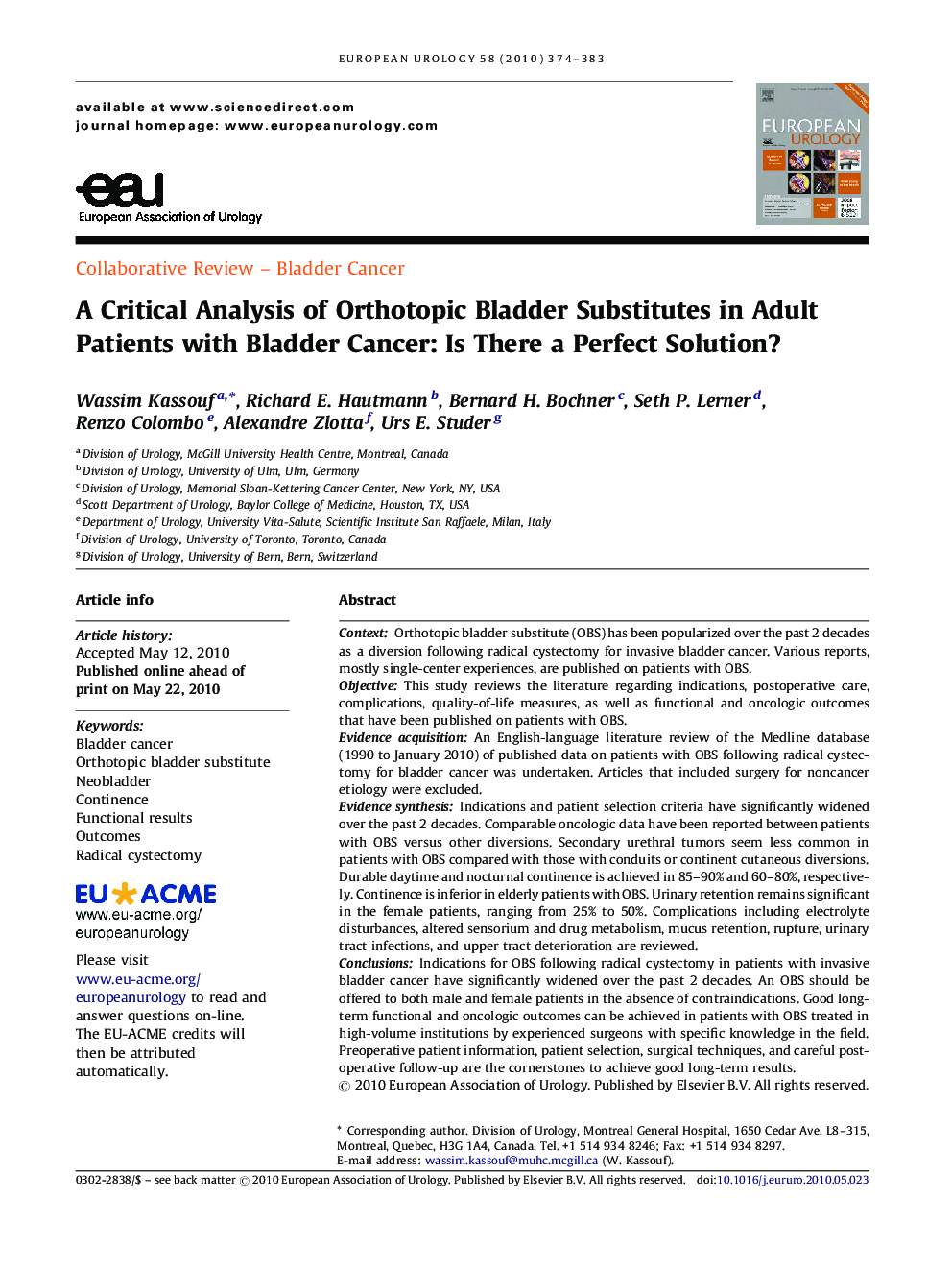| Article ID | Journal | Published Year | Pages | File Type |
|---|---|---|---|---|
| 3924850 | European Urology | 2010 | 10 Pages |
ContextOrthotopic bladder substitute (OBS) has been popularized over the past 2 decades as a diversion following radical cystectomy for invasive bladder cancer. Various reports, mostly single-center experiences, are published on patients with OBS.ObjectiveThis study reviews the literature regarding indications, postoperative care, complications, quality-of-life measures, as well as functional and oncologic outcomes that have been published on patients with OBS.Evidence acquisitionAn English-language literature review of the Medline database (1990 to January 2010) of published data on patients with OBS following radical cystectomy for bladder cancer was undertaken. Articles that included surgery for noncancer etiology were excluded.Evidence synthesisIndications and patient selection criteria have significantly widened over the past 2 decades. Comparable oncologic data have been reported between patients with OBS versus other diversions. Secondary urethral tumors seem less common in patients with OBS compared with those with conduits or continent cutaneous diversions. Durable daytime and nocturnal continence is achieved in 85–90% and 60–80%, respectively. Continence is inferior in elderly patients with OBS. Urinary retention remains significant in the female patients, ranging from 25% to 50%. Complications including electrolyte disturbances, altered sensorium and drug metabolism, mucus retention, rupture, urinary tract infections, and upper tract deterioration are reviewed.ConclusionsIndications for OBS following radical cystectomy in patients with invasive bladder cancer have significantly widened over the past 2 decades. An OBS should be offered to both male and female patients in the absence of contraindications. Good long-term functional and oncologic outcomes can be achieved in patients with OBS treated in high-volume institutions by experienced surgeons with specific knowledge in the field. Preoperative patient information, patient selection, surgical techniques, and careful postoperative follow-up are the cornerstones to achieve good long-term results.
